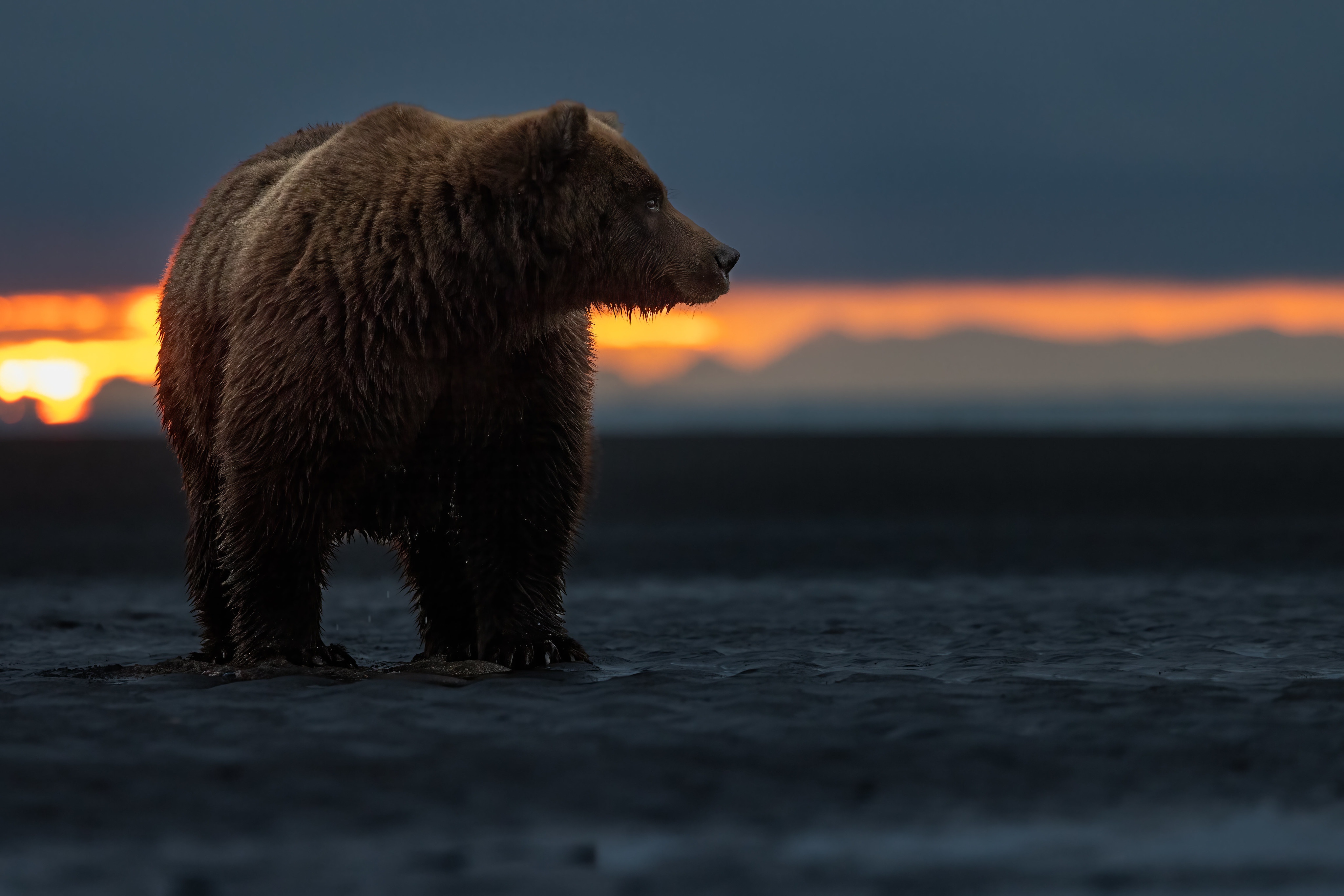Have you ever wondered what it’s like to walk in the shadow of a bear? These magnificent creatures are not just symbols of strength and power but also vital players in the ecosystem. Whether you’re an outdoor enthusiast, wildlife lover, or simply curious about nature's most iconic animals, understanding the bear is key. From their habitats to their behaviors, we’re diving deep into the world of the bear.
Picture this: You’re on a hike in the wilderness, and suddenly, you spot something massive in the distance. It’s not just any animal—it’s a bear. Your heart races, and your mind starts racing with questions. What kind of bear is it? Is it dangerous? Why is it there? These questions are part of what makes studying bears so fascinating. They’re not just animals; they’re survivors, strategists, and symbols of the wild.
But why should you care about bears? Beyond their sheer awesomeness, bears play a crucial role in maintaining balance in nature. They influence ecosystems, help with seed dispersal, and even impact human lives in ways you might not expect. So, buckle up because we’re about to take you on a journey through the world of the bear—a journey that will leave you in awe of these incredible creatures.
Read also:Michael Schumacher The Legend Who Redefined Formula 1 Racing
What Makes the Bear So Special?
When we talk about bears, we’re not just talking about one species. There are eight recognized species of bears worldwide, each with its own unique characteristics and adaptations. From the massive polar bear to the playful panda, every type of bear has something special to offer. But what exactly makes them so special?
First off, bears are incredibly adaptable. They can thrive in a variety of environments, from icy tundras to dense forests. This adaptability is one of the reasons why they’ve been around for millions of years. Additionally, bears are intelligent creatures. They have problem-solving skills that allow them to find food, build shelters, and even outsmart predators.
Types of Bears and Their Unique Traits
Let’s break it down. Here’s a quick rundown of the different types of bears and what sets them apart:
- Polar Bear: The king of the Arctic, known for its thick white fur and incredible swimming abilities.
- Grizzly Bear: Famous for its size and strength, often found in North America.
- Black Bear: Smaller than grizzlies, but just as clever, often seen in North American forests.
- Panda Bear: The adorable face of conservation, native to China and known for its love of bamboo.
- Sloth Bear: Found in India and Sri Lanka, known for its shaggy coat and love for termites.
- Sun Bear: The smallest of the bear family, known for its golden chest markings.
- Asiatic Black Bear: Native to Asia, known for its distinctive white crescent marking on its chest.
- Spectacled Bear: The only bear species found in South America, known for its light facial markings.
Each of these species brings something unique to the table, making the bear family incredibly diverse and interesting.
The Bear's Role in the Ecosystem
Bears aren’t just fascinating creatures; they’re also essential to the ecosystems they inhabit. They play a role in seed dispersal, which helps maintain plant diversity. For example, when bears eat fruits and berries, they inadvertently spread the seeds through their droppings. This process helps new plants grow and thrive.
Additionally, bears help control populations of other animals. By preying on weaker or slower animals, they prevent overpopulation, which can lead to resource depletion. In this way, bears contribute to a balanced and healthy ecosystem.
Read also:Sd Movies Point Download Your Ultimate Guide To Highquality Movies
Conservation Efforts for Bears
Despite their importance, many bear species are threatened by habitat loss, climate change, and human conflict. Conservation efforts are crucial to ensuring their survival. Organizations around the world are working tirelessly to protect bear habitats, reduce human-bear conflicts, and raise awareness about the importance of these animals.
One of the most successful conservation stories is that of the panda bear. Through dedicated efforts, the panda population has increased, and the species has been downlisted from "endangered" to "vulnerable." This success story shows what can be achieved with commitment and collaboration.
Understanding Bear Behavior
So, what’s it like to be a bear? Bears are complex creatures with fascinating behaviors. They spend a lot of their time searching for food, which can vary depending on the species. Some bears are omnivores, eating both plants and animals, while others, like the panda, have a more specialized diet.
Hibernation is another interesting aspect of bear behavior. During the winter months, many bear species enter a state of dormancy to conserve energy. This process allows them to survive when food is scarce. However, not all bears hibernate. For example, polar bears remain active throughout the year, relying on their fat reserves to survive the harsh Arctic winters.
Tips for Encountering Bears in the Wild
If you ever find yourself face-to-face with a bear in the wild, it’s important to know how to react. Here are some tips to keep you safe:
- Stay calm and avoid making sudden movements.
- Speak in a calm, firm voice to let the bear know you’re human.
- Slowly back away while keeping the bear in sight.
- Carry bear spray and know how to use it.
Remember, bears are wild animals, and it’s important to respect their space and give them the distance they need.
Biography of the Bear
Now, let’s take a closer look at the life of a bear. Here’s a breakdown of some key facts:
| Species | Habitat | Diet | Lifespan |
|---|---|---|---|
| Polar Bear | Arctic regions | Seals, fish | 25-30 years |
| Grizzly Bear | North America | Omnivorous | 20-25 years |
| Panda Bear | China | Bamboo | 20 years |
These facts give us a glimpse into the diverse lives of bears across the globe.
The Bear in Popular Culture
Bears have captured the human imagination for centuries, appearing in myths, legends, and modern media. From the classic story of Goldilocks and the Three Bears to the beloved character of Winnie the Pooh, bears have a special place in our hearts. In fact, bears are often used as symbols of strength, courage, and wisdom in various cultures.
But it’s not just in stories where bears make an impact. They’ve also been featured in films, documentaries, and even video games. These portrayals help raise awareness about bears and their importance in the natural world.
Why Bears Matter in Modern Society
In today’s world, bears face numerous challenges. Habitat destruction, climate change, and human-wildlife conflict threaten their survival. However, by understanding and appreciating bears, we can work together to protect them.
Bears also serve as ambassadors for conservation. When people learn about the challenges faced by bears, they become more aware of the broader issues affecting wildlife and the environment. This awareness can lead to positive change, benefiting not just bears but all living creatures.
Scientific Insights into Bear Evolution
Did you know that bears have been around for millions of years? Scientists believe that the ancestors of modern bears first appeared during the Miocene epoch, around 20 million years ago. Over time, bears evolved into the diverse species we see today.
Recent studies have shed light on the genetic relationships between different bear species. For example, researchers have discovered that polar bears and brown bears are closely related, despite their vastly different habitats. This genetic connection highlights the adaptability of bears and their ability to thrive in a variety of environments.
Future Research Directions
As technology advances, scientists are uncovering new insights into the world of bears. From tracking their movements using GPS collars to studying their DNA, researchers are learning more about how bears interact with their environments. These discoveries can help inform conservation efforts and ensure the survival of bear populations for generations to come.
Conclusion: Why We Should Care About Bears
In conclusion, bears are more than just fascinating creatures—they’re vital members of the natural world. From their role in maintaining ecosystems to their impact on human culture, bears have a profound influence on our planet. By understanding and protecting bears, we can help preserve the beauty and diversity of nature.
So, what can you do to help? Start by educating yourself and others about the importance of bears. Support conservation organizations working to protect bear habitats. And if you ever encounter a bear in the wild, remember to respect its space and admire it from a safe distance.
Together, we can ensure that these majestic creatures continue to thrive in the wild. Share this article with your friends and family to spread the word about the incredible world of the bear. Because when it comes to bears, knowledge is power—and power can make a difference.
Table of Contents
- What Makes the Bear So Special?
- Types of Bears and Their Unique Traits
- The Bear's Role in the Ecosystem
- Conservation Efforts for Bears
- Understanding Bear Behavior
- Tips for Encountering Bears in the Wild
- Biography of the Bear
- The Bear in Popular Culture
- Why Bears Matter in Modern Society
- Scientific Insights into Bear Evolution


